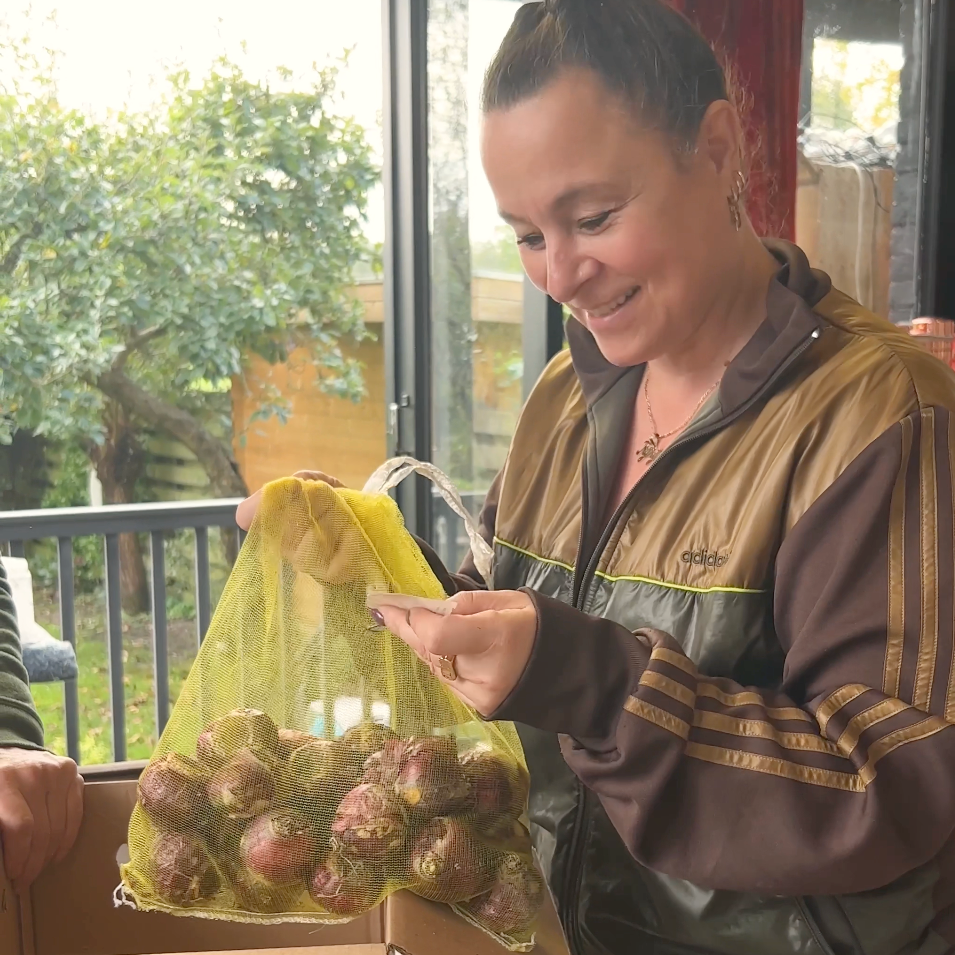Ben’s New Grapes
This week, I received a text message from my friend Ben, asking me if I happened to be in the neighbourhood somewhere in the next couple of days. Coincidentally, I was, as I would arrive in Hoek van Holland the following morning via the ferry from Harwich. I was in the UK for a few days with my friends Johan van Scheepen and Jan Pennings. We had to visit England for a Bulb Committee meeting, and Johan van Scheepen had been specially invited to give a lecture about the new process of registering Tulip varieties.
Should I tell you more about that process later, or would you like a sneak peek now? Well, I figure that a newsletter should contain actual news every now and then, so I’ll just get into it right now. The way Tulips are classified is going to change. In order to know how that change is going to happen, I’ll first tell you a little bit more about classification in general.
Botanists like to be able to put all plants in little boxes. They do this to easily tell what characteristics a certain plant has. We don’t just do this for Tulips: Daffodils, Dahlias, Crocuses, Snowdrops, and whatever other plant you can think of has all been neatly organised by botanists. Real enthusiasts can gather a lot of knowledge from the specific box a plant belongs to, as they know exactly what kind of characteristics apply to each subdivision. Some of you all probably know bits and pieces of this as well: a jonquilla Daffodil is different from a triandus Daffodil, and nivalis-Snowdrops are not the same as Snowdrops of the elwesii type. Much of this knowledge comes from simple gardening experience, seeing the bulbs and the flowers for yourself, and noticing different things about what you plant in your garden.
So. The Tulips used to be carefully divided into the following groups:
- Single Early Group
- Double Early Group
- Triumph Group
- Darwinhybrid Group
- Single Late Group
- Lily-flowered Group
- Fringed Group
- Viridiflora Group
- Rembrandt Group
- Parrot Group
- Double Late Group
- Kaufmanniana Group
- Fosteriana Group
- Greigii Group
- Miscellaneous
To you, some of these divisions might feel like just a random collection of words, and many gardeners actually felt the same way. Johan van Scheepen therefore thought it was time to change it up, since dividing plants into groups should make things easier, not more complicated. This left him with the following new divisions:
Single Flowered Group
These can then be divided into early-, mid-, and late flowering Tulips.
Double Flowered Group
These can then also be divided into early-, mid-, and late flowering Tulips.
In addition to the blooming period, there is also an option to mention whether the Tulip is Viridiflora, Parrot, Rembrandt, Fringed, or Lily-flowered.
This will make life much easier for customers, as you can tell right away if this is a variety you are looking for to add to your garden.
I’ll give a few examples:
Coldplay used to be a Fringed Tulip.
Now, it is a Single Flowered, mid-season Tulip, fringed and Rembrandt.
La Perla used to be a Lily-flowered Tulip.
Now, she is a Single Flowered, mid-season Tulip, Lily-flowered
We can also now use shorter descriptions:
Sugar Crystal is now a Double Flowered (M) (for Mid-season) Fringed.
Crispion Sweet: Double Flowered (E) (for Early) Fringed.
You can easily tell what you are going to get if you choose to plant this Tulip in your garden. I think this change is the good kind of change, and other than this meeting, we had a very fun trip together. Jan and Johan are still not in agreement about who is the better driver, and I have been laughing at their discussion from the back seat while writing this new system down for you.
When we got to England, the first thing we did was pick up Alan Shipp at his house, and because we had planned to have some extra time, we took the opportunity to visit an old friend of his, a man called Lord Timothy Clark. I say old friend because my dear friend Alan is 85, and his friend is 89 years old. He was quite a special figure, he exclusively wanted to use plants in his garden that were from before 1920. When I offered to send him a Hyacinth, he politely declined: too modern for his aesthetic. He did have beautiful, old apple trees and rose bushes, literally everything was over a hundred years old, just like he wanted it to be. And he got everything to be in its best possible shape, even after all that time: he spends ages picking the best seeds from the plants, and making sure they can come back in their original shape and form. About hybridising, he said: “It takes four generations to bring back the intelligence, and a fifth to make a Lady.” I didn’t understand it exactly, but I thought he was a beautiful man. When it came to gardening, he had the exact same principle: no modern tools, only stuff that already existed in, you guessed it, 1920. He had a lot of porcelain, old cupboards and rugs, paintings and an antique clock. It was all exceptionally beautiful and nostalgic. Truly one of the best visits ever.
But I am going to stop writing, I’m finishing this on a Friday afternoon, and the translators probably want to get it over with before the weekend starts, too. And we didn’t even get to the grapes! I’ll see you next week.
Kind regards,
Carlos van der Veek

 Deutsch
Deutsch English
English Nederlands
Nederlands
